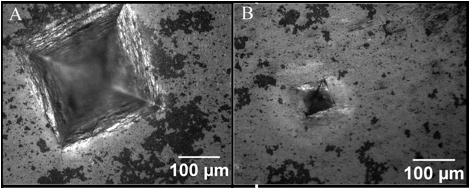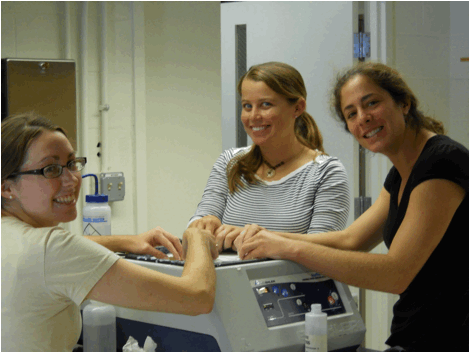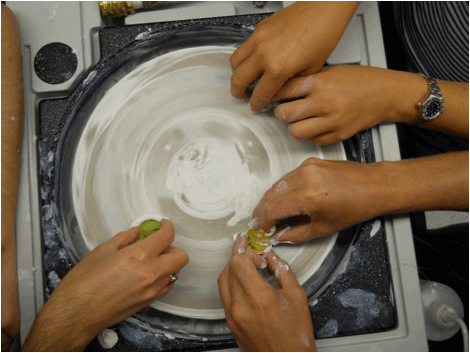|
Shell Mechanics
To access the adductor muscle sinus and hemolymph during the clamped pH studies we notched the sides of the oyster shell with a grinding wheel. While doing this, we noticed that C. ariakensis was substantially easier to grind than C. virginica. This led us to question if the shell properties of these species were different and what affect that might have on predation. To answer this, we teamed up with researchers at the National Institute of Standards and Technology’s Material Measurement Laboratory (Material Science and Engineering Division) and George Washington University. Together we quantified and compared two mechanical properties of shells: hardness (resistance to irreversible deformation; GPa) and the load compression force (force necessary to produce a crack; N) of multiple age classes of both C. ariakensis and C. virginica. This research can be applied to oyster management decisions, as well as to oyster shell bioceramic advancements and technology. Further, this work contributes to understanding shell mechanics and sheds light on similarities and differences between two closely related species and eludes to potential differences in predation vulnerability.

Figure 1. The squares are the indent in the shell from the diamond tip of the microindentater. The diagonal lengths from this indentation are used in Vicker’s hardness equation to calculate hardness of the oyster shell.

Figure 2. Paynter lab staff and students helped polish the shells until they were reflective!

Figure 3. Polishing the shells until they became reflective using different grits and solutions (some even contained diamond fragments).
For more specific inquiries about our comparative physiology work please contact us at paynteroysterlab@gmail.com.
|

